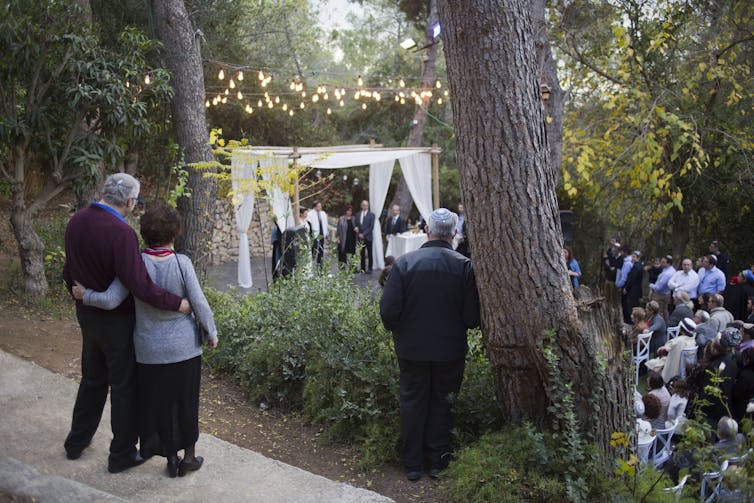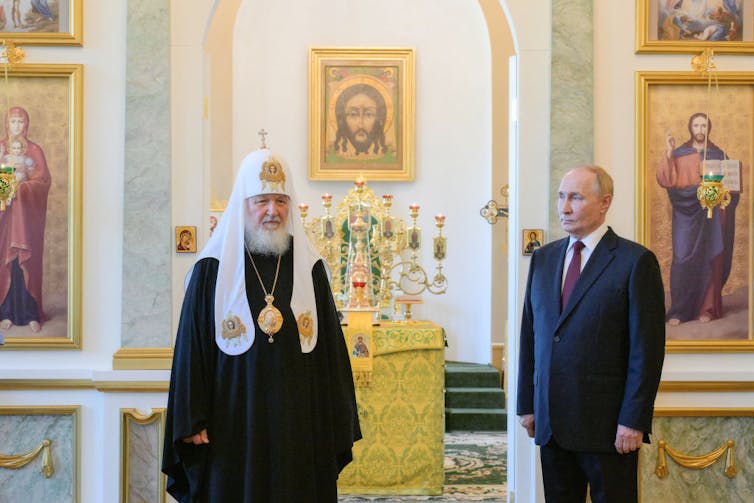Why government support for religion doesn’t necessarily make people more religious
- Government support for religion doesn’t necessarily make people more religious; in fact, it can have unintended consequences that decrease religious participation.
- The separation between church and state is intended to protect individual freedom of religion, but some conservatives argue that this separation hinders the creation of strong communities and can lead to a “free-market approach” where all faiths compete for worshippers without government interference or preference.
- Research suggests that strong relationships between religion and state can actually decrease religious participation, rather than encouraging it. This is because government policies can create an “all-or nothing” choice for adherents who cannot practice their faith on their own terms.
- The example of Israel, where the government sponsors a particular branch of Judaism (Orthodox), highlights how government support can lead to a religious monopoly and decreased religious participation among those who do not identify with that branch.
- History shows that governments’ attempts to strengthen particular religious communities may backfire, as seen in countries like Russia, Hungary, and Romania, where low rates of religiosity persist despite government support for certain faiths.

The IRS will offer religious congregations more freedom to endorse political candidates without jeopardizing their tax-exempt status, the agency said in a July 2025 court filing. President Donald Trump has previously vowed to abolish the Johnson Amendment, which bars charitable nonprofits from taking part in political campaigns – although the latest move simply reinterprets the rule.
Celebrating the change, House Speaker Mike Johnson highlighted an argument that’s popular among some conservatives: that the Constitution does not actually require the separation of church and state.
Thomas Jefferson, who coined the phrase, did not intend “to keep religion from influencing issues of civil government,” Johnson wrote in a July 12 op-ed published on the social platform X. “The Founders wanted to protect the church from an encroaching state, not the other way around.”
Officials in several red states have challenged long-standing norms surrounding religion and state, ranging from introducing prayer and Bibles in public classrooms to attempts to secure government funding for religious schools.
Conservative thinkers have long pushed for closer ties between religion and the government, arguing that religious institutions can create strong communities. In my own research, I’ve found that mass shootings are less likely in a more religious environment.
For critics, of course, attempts to lower the wall of separation between church and state raise constitutional concerns. The First Amendment states that “Congress shall make no law respecting an establishment of religion, or prohibiting the free exercise thereof.” What’s more, critics fear that recent attempts to lower barriers between church and state favor conservative Christian groups over other faiths.
But as a scholar of religion and politics, I believe another reason for caution is being overlooked. Research indicates that strong relationships between religion and state can be a factor that actually decreases religious participation, rather than encouraging it.
All or nothing
Some scholars suggest that religious institutions operate like businesses in a marketplace, competing for believers. Government policies toward religion can change the balance of power between competing firms the same way that economic policies can affect markets for consumer goods.
At a glance, it might seem like government support would strengthen religious institutions. In reality, it can backfire, whether or not the government promotes one particular faith above others. In some cases, adherents who cannot practice religion on their own terms opt out of practicing it entirely.
In Israel, for example, Orthodox Jewish institutions receive government recognition that more liberal Jewish denominations do not. Orthodox authorities are allowed to manage religious sites, run public religious schools and perform marriages. Many couples who do not want to get married under Orthodox law, or cannot, hold a ceremony abroad or register as a common-law marriage.

AP Photo/Ariel Schalit
In fact, many scholars refer to Israel as an example of a religious “monopoly.” Because the government sponsors a particular branch, Orthodox Judaism, Jewish citizens sometimes face an “all or nothing” choice. The country’s Jewish population is sharply divided between people who are religiously observant and people who identify as secular.
Government involvement can also hurt religious institutions by making them seem less independent, decreasing people’s trust. In a 2023 study of 54 Christian-majority countries, political scientists Jonathan Fox and Jori Breslawski found that some adherents felt that religious institutions become less legitimate when backed by the government. In addition, support from the state decreased people’s confidence in government.
Their findings built on previous research showing that the public is less likely to contribute to faith-based charities and attend religious services when the government offers funding for religious institutions.
In fact, many of the world’s lowest rates of religiosity are found in wealthy countries that have official churches, or had one until relatively recently, such as Sweden. Others have a history of separating people of different faiths into their own schools and other institutions, such as Belgium and the Netherlands.
History lessons
Perhaps the strongest example of how government support for religion can decrease religious participation is found in the former Soviet Union and its allies.
During the Cold War, Soviet officials sought to stamp out religious activity among their citizens. However, policies to repress independent religious institutions worked hand in hand with policies to co-opt religious institutions that would work with the government. Access to religious spaces made it easier for officials to spy on members and punish clergy who protested their rule.
In Hungary, the Communist Party sponsored government-run Catholic churches that were cut off from the Vatican. In Romania, the regime integrated formerly Catholic Churches into a state Orthodox Church. In the former Czechoslovakia, meanwhile, the Communist Party paid clergy’s salaries to keep them subservient.
To this day, many countries in the former Eastern Bloc have low rates of religious participation. In Russia, for example, a majority of citizens call themselves Orthodox Christians, and the church wields influence in politics. Yet only 16% of adults say religion is “very important” in their lives.
While scholars can point to the legacy of overt repression as a source of low religiosity, government support of religious institutions is also a lingering factor. Most post-Soviet states inherited systems that require religious groups to register, and they only provide funding to faiths that the government considers legitimate. Similar policies remain common in southeastern and central Eastern Europe.
In recent years, some countries in the region, including Russia and Hungary, have experienced democratic backsliding at the hands of populist leaders who also politicize religion for their own gain. Because of low rates of religious practice in such countries, religious leaders may welcome government support.

Alexey Danichev/Pool/AFP via Getty Images
Free market for faith
Most wealthy countries have witnessed steep declines in religiosity in the modern era. The United States is an outlier.
Overall, the percentage of Americans belonging to a religious congregation is declining, as is the share of Americans who regularly attend worship services. However, the percentage of Americans who are intensely religious has remained unchanged over the past several decades. Around 29% of Americans report praying several times a day, for example, and just under 7% say they attend religious services more than once a week.
Some religion scholars argue that the “free-market approach” – where all faiths are free to compete for worshippers, without government interference or preference – is what makes America relatively religious. In other words, they believe that this so-called “American exception” is because of the separation between church and state, not in spite of it.
Time will tell if conservatives’ push for collaboration between religion and the government will continue, or have its intended effects. History suggests, however, that governments’ attempts to strengthen particular religious communities may backfire.
![]()
Brendan Szendro does not work for, consult, own shares in or receive funding from any company or organization that would benefit from this article, and has disclosed no relevant affiliations beyond their academic appointment.
